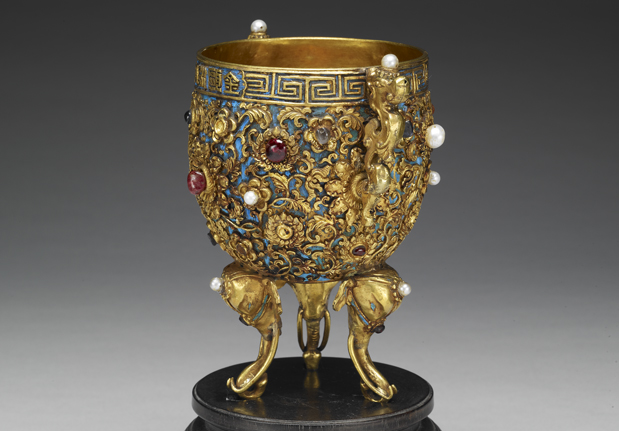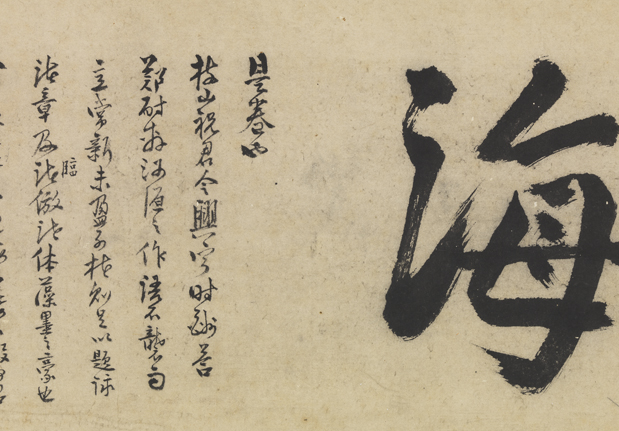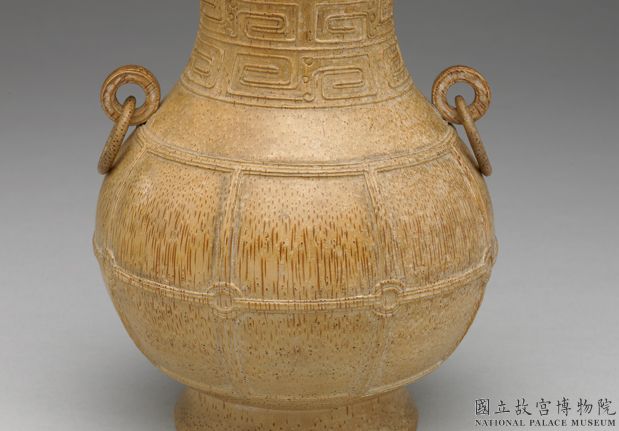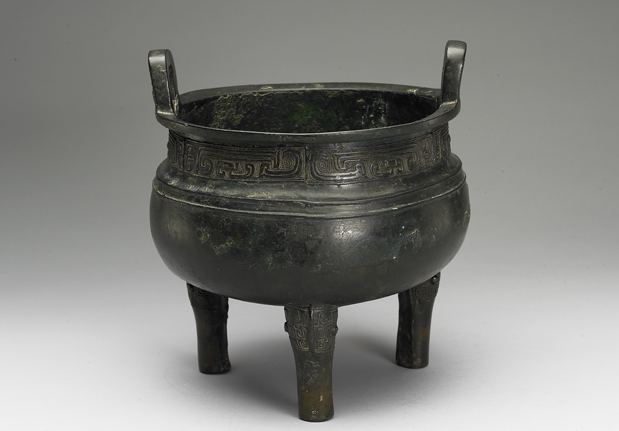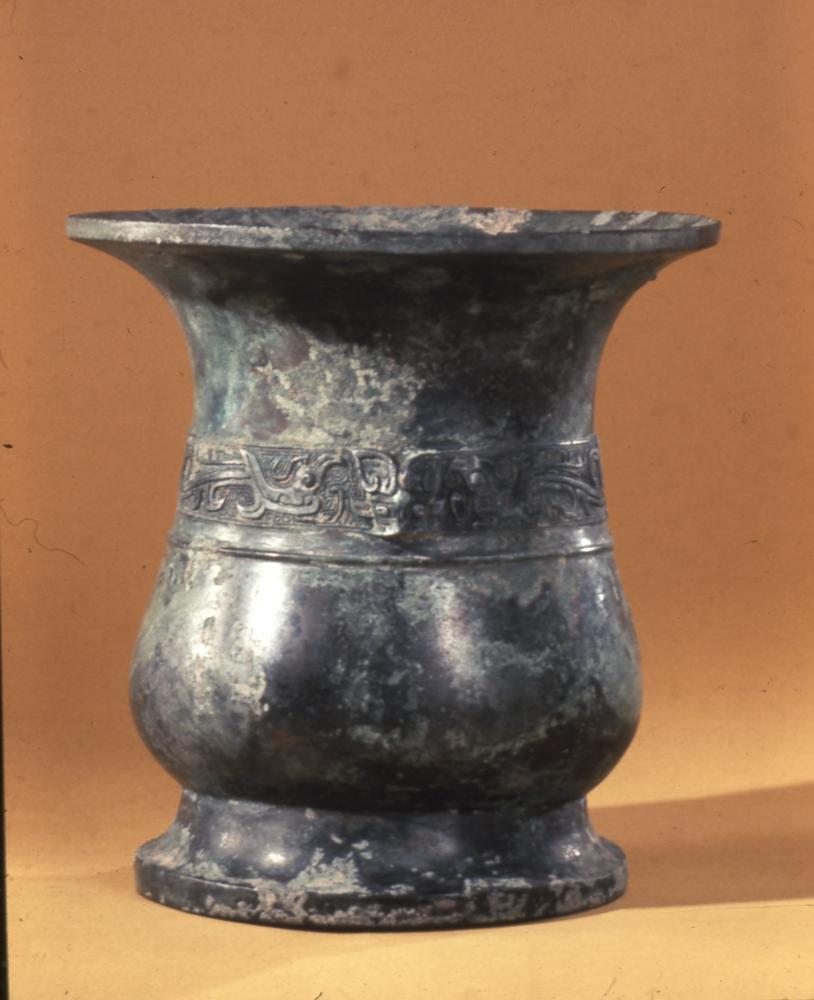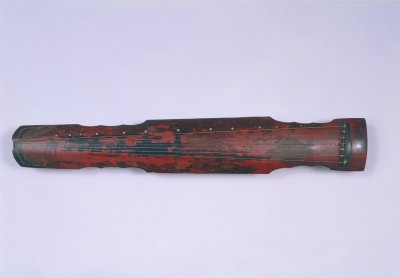Period:Ming dynasty Production date:1573-1620
Materials:porcelain
Technique:glazed, underglazed,
Subjects:dragon
Dimensions:Diameter: 24 centimetres Height: 52 centimetres
Description:
Large porcelain meiping vase with underglaze blue decoration. This large heavily potted meiping has a short narrow neck with a flaring mouth and thickened rim. Its sides taper in from broad shoulders and it is supported by a broad foot ring, inside which the unglazed base is recessed. Boldly painted in a dark cobalt blue, it shows a four-clawed, one-horned dragon clenching a ‘lingzhi’ fungus in its jaws. This undulating dragon’s sinewy body and flowing mane are striped rather than covered in scales and it has a foliage tail. Below is a border of tall lappets with ‘ruyi-style’ heads and above the identical border is inverted. A horizontal six-character Wanli reign mark is written from right to left above the dragon’s head.
IMG
![图片[1]-meiping BM-1973-0726.372-China Archive](https://chinaarchive.net/Ming dynasty/Ceramics/mid_00262139_001.jpg)
Comments:Harrison-Hall 2001:Recent excavations at the imperial Xuande (1425-36) kiln site at Jingdezhen have revealed the prototype for this style of meiping. Made to the same scale and with only minor variations in the design, the Wanli meiping lacks energy by comparison to the Xuande original. The blue is much more uniform and the lappets are simplified. Numerous late Ming porcelains were made in deliberately archaistic styles. Fifteenth-century designs were much admired and imitated. Other identical Wanli pieces are, for example, in the Percival David Foundation of Chinese Art, London, the Lee Kong Chian Art Museum, National University of Singapore, and the Kunstindustrimuseet, Copenhagen. Meiping with phoenix instead of the dragon were also made and an example is in the Idemitsu Museum, Tokyo.Eight blue-and-white meiping of this form, still with their covers, were discovered in the Wanli emperor’s tomb, the Ding Ling. They were among the relatively few porcelains discovered there when the tomb was investigated. Meiping are one of the most common forms found in grand Ming burials.
Materials:porcelain
Technique:glazed, underglazed,
Subjects:dragon
Dimensions:Diameter: 24 centimetres Height: 52 centimetres
Description:
Large porcelain meiping vase with underglaze blue decoration. This large heavily potted meiping has a short narrow neck with a flaring mouth and thickened rim. Its sides taper in from broad shoulders and it is supported by a broad foot ring, inside which the unglazed base is recessed. Boldly painted in a dark cobalt blue, it shows a four-clawed, one-horned dragon clenching a ‘lingzhi’ fungus in its jaws. This undulating dragon’s sinewy body and flowing mane are striped rather than covered in scales and it has a foliage tail. Below is a border of tall lappets with ‘ruyi-style’ heads and above the identical border is inverted. A horizontal six-character Wanli reign mark is written from right to left above the dragon’s head.
IMG
![图片[1]-meiping BM-1973-0726.372-China Archive](https://chinaarchive.net/Ming dynasty/Ceramics/mid_00262139_001.jpg)
Comments:Harrison-Hall 2001:Recent excavations at the imperial Xuande (1425-36) kiln site at Jingdezhen have revealed the prototype for this style of meiping. Made to the same scale and with only minor variations in the design, the Wanli meiping lacks energy by comparison to the Xuande original. The blue is much more uniform and the lappets are simplified. Numerous late Ming porcelains were made in deliberately archaistic styles. Fifteenth-century designs were much admired and imitated. Other identical Wanli pieces are, for example, in the Percival David Foundation of Chinese Art, London, the Lee Kong Chian Art Museum, National University of Singapore, and the Kunstindustrimuseet, Copenhagen. Meiping with phoenix instead of the dragon were also made and an example is in the Idemitsu Museum, Tokyo.Eight blue-and-white meiping of this form, still with their covers, were discovered in the Wanli emperor’s tomb, the Ding Ling. They were among the relatively few porcelains discovered there when the tomb was investigated. Meiping are one of the most common forms found in grand Ming burials.
© Copyright
The copyright of the article belongs to the author, please keep the original link for reprinting.
THE END
